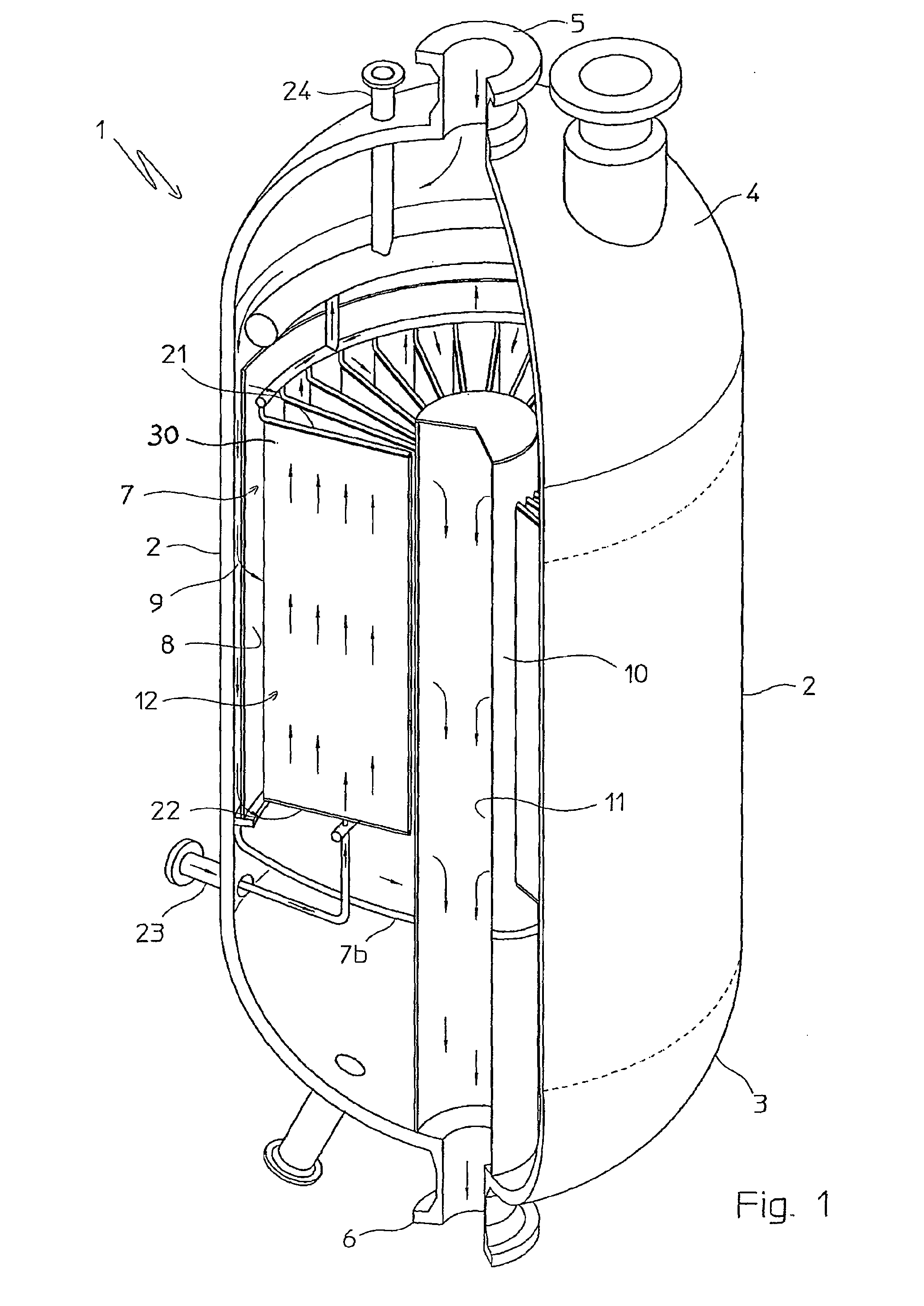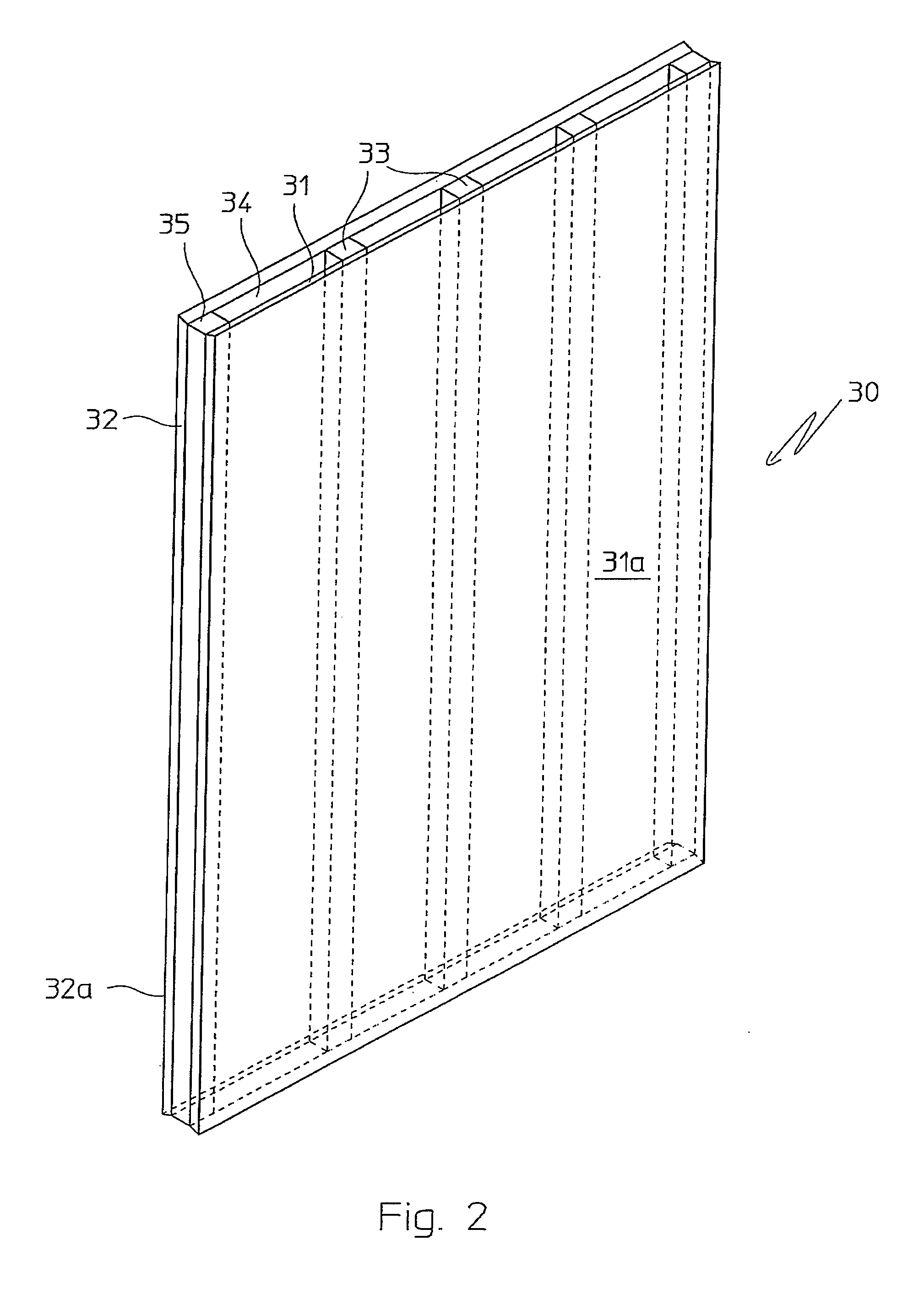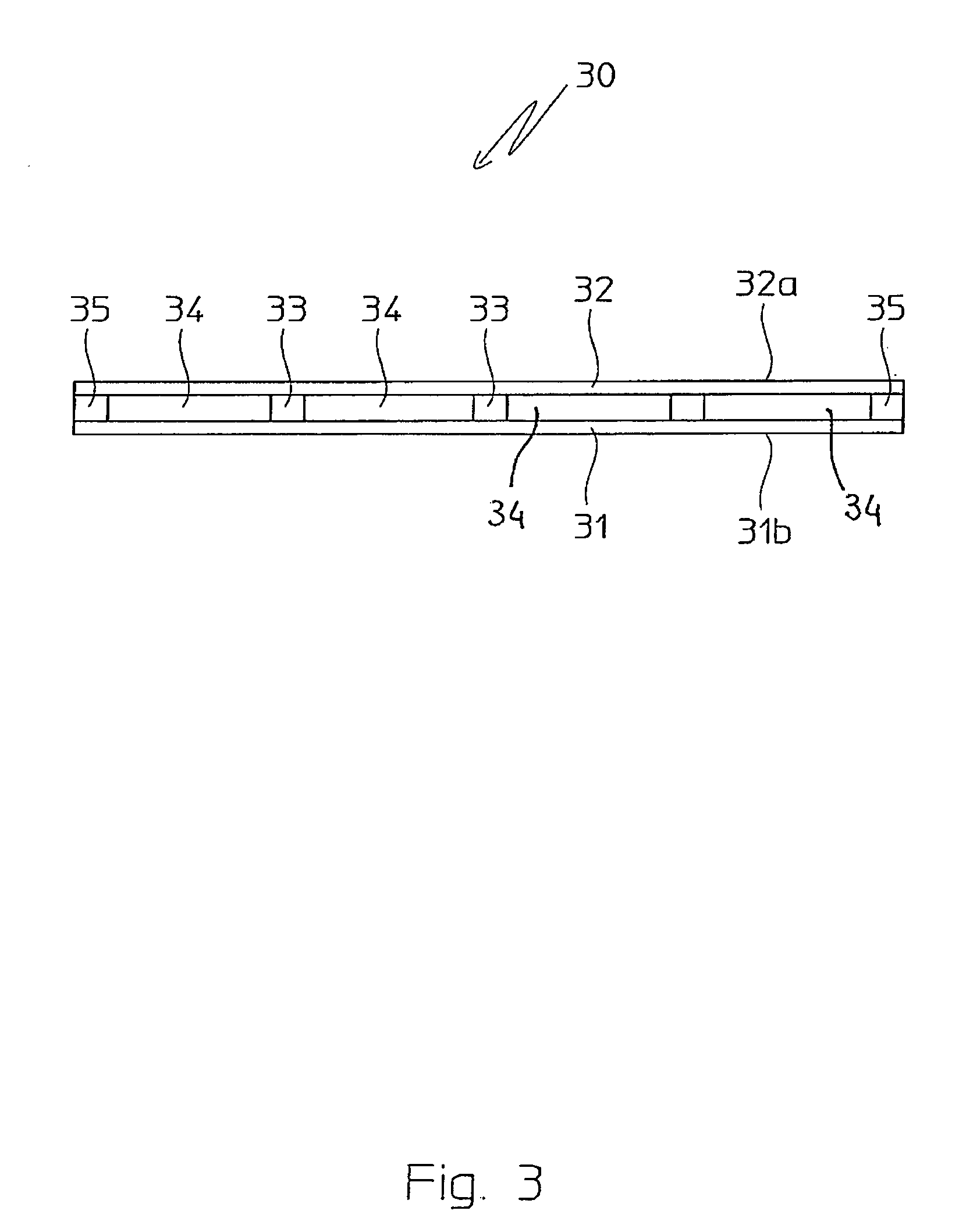Chemical Reactor with Plate Type Heat Exchange Unit
- Summary
- Abstract
- Description
- Claims
- Application Information
AI Technical Summary
Benefits of technology
Problems solved by technology
Method used
Image
Examples
Embodiment Construction
[0039]With reference to FIG. 1, an isothermal chemical reactor 1 is shown which comprises a cylindrical shell 2, with vertical axis, a lower end 3 and an upper end 4, respectively equipped with a flange 5 for the inlet of the reagents and a flange 6 for the outlet of the reaction products.
[0040]The example of FIG. 1 refers to a catalytic reactor, for example for the synthesis of methanol, which comprises a catalytic rack 7, of substantially cylindrical and annular structure. Said catalytic rack 7 is essentially composed of an external cylindrical wall 8, an internal cylindrical wall 10 and an annular bottom 7b. The outer wall 8 defines, with the jacket 2, an interspace 9 of reduced width. The rack 7 is destined to contain a mass of an appropriate catalyst, not shown.
[0041]Said outer wall 8 and said inner wall 10 are perforated in order to allow the passage of the reagent gases from the interspace 9 into the rack 7, and to allow the passage of the gaseous reaction products from the r...
PUM
 Login to View More
Login to View More Abstract
Description
Claims
Application Information
 Login to View More
Login to View More - R&D
- Intellectual Property
- Life Sciences
- Materials
- Tech Scout
- Unparalleled Data Quality
- Higher Quality Content
- 60% Fewer Hallucinations
Browse by: Latest US Patents, China's latest patents, Technical Efficacy Thesaurus, Application Domain, Technology Topic, Popular Technical Reports.
© 2025 PatSnap. All rights reserved.Legal|Privacy policy|Modern Slavery Act Transparency Statement|Sitemap|About US| Contact US: help@patsnap.com



